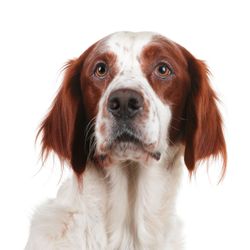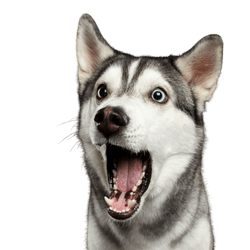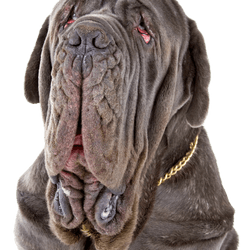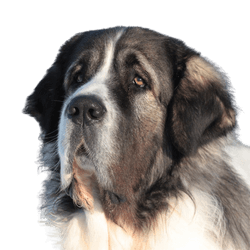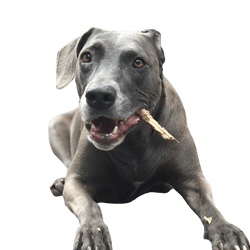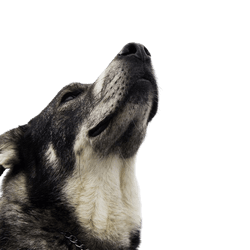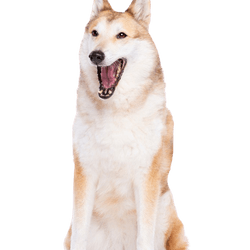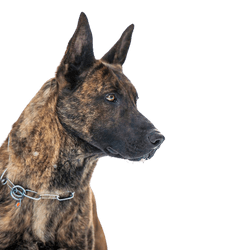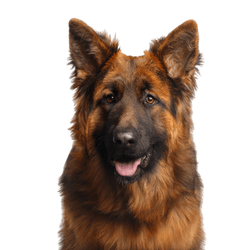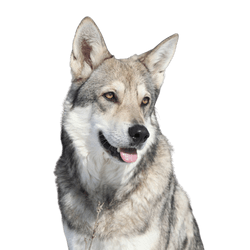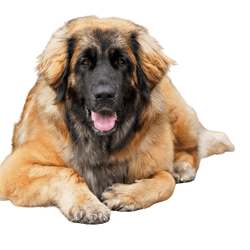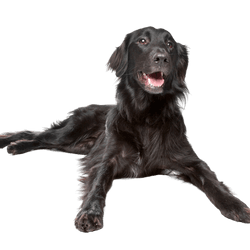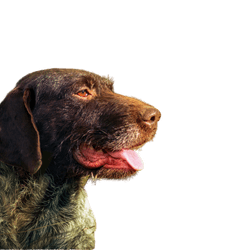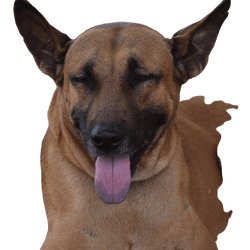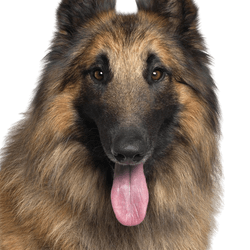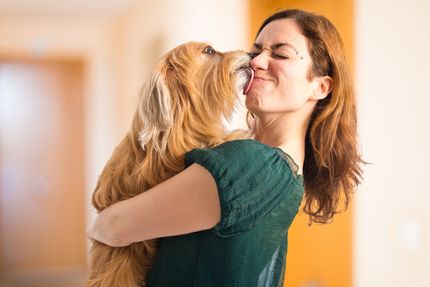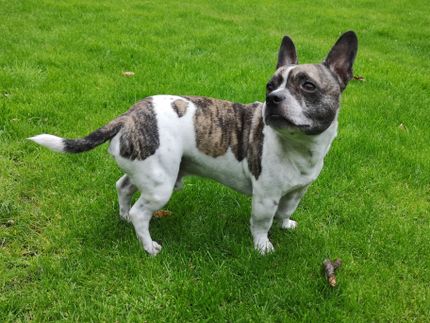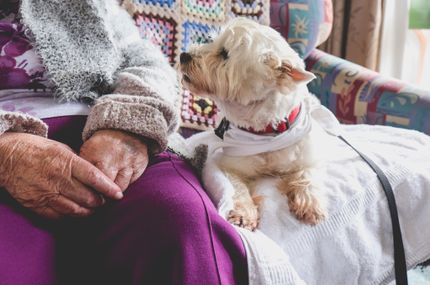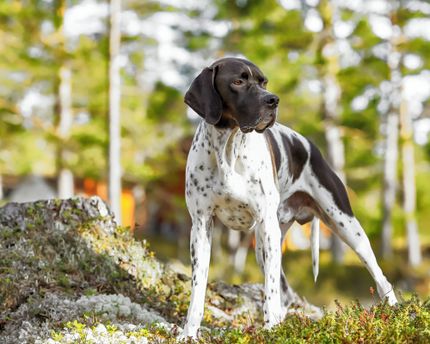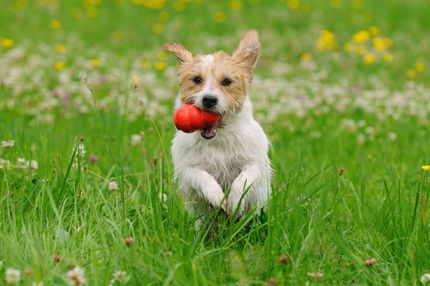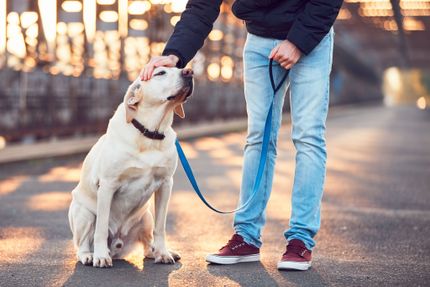
Spanish Mastiff Breed description: Character & Co
Spanish Mastiff
Facts & Origin
The Spanish Mastiff is a relatively large dog that was and still is used, mainly in Spain, as a herding and guard dog.
It is well suited as a herding dog, guard dog, farm dog, watch dog and family dog.
Where does the Spanish Mastiff come from?
The original origin of the Spanish Mastiff is unclear, it is believed that the gentle giant descended from large dogs brought to Spain by the Phoenicians and Greeks about 2000 years ago.
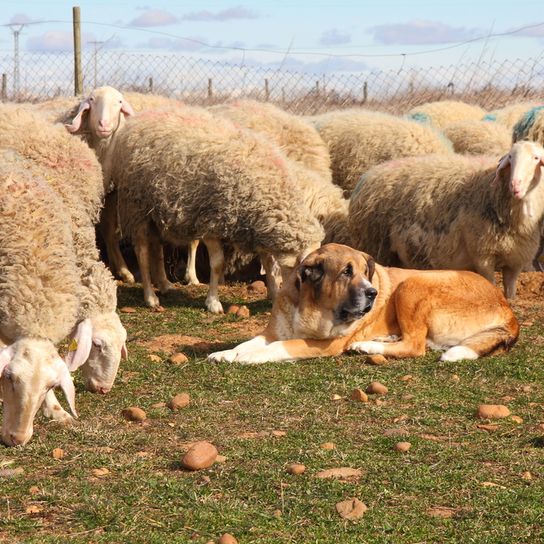
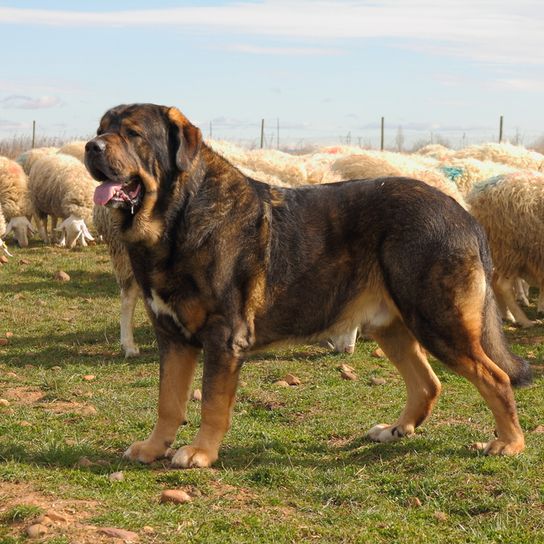
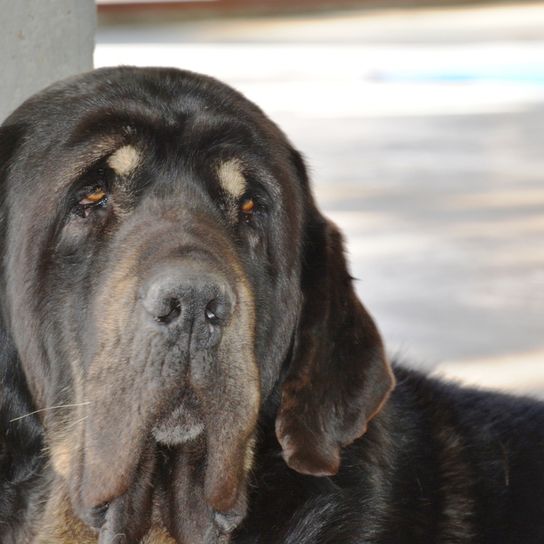
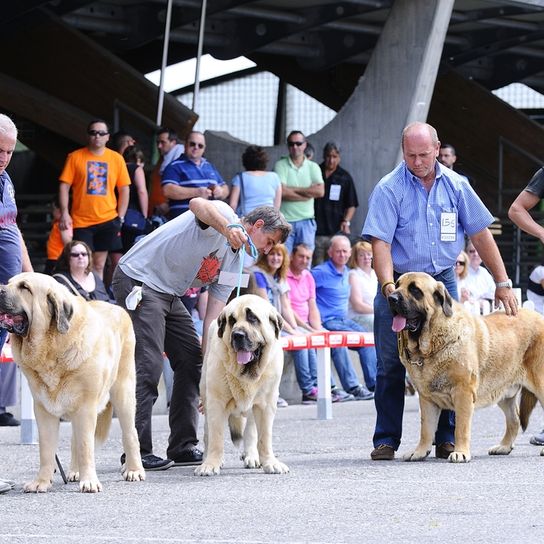
| Alternate Name | Mastin Espanol |
| Origin | Spain |
| Life expectancy | 10 - 12 years |
| Care requirements | low-maintenance |
| Activity level | low |
| FCI group | Molossian type |
| AKC group | Foundation Stock Service |
| KC group | not recognised |
Attitude, character and temperament of the breed
What are typical character traits of the Mastín Español?
The Spanish Mastiff is a confident, courageous, but also a good-natured dog.
It is aware of his strength and never attacks without reason, but has a strong need to protect its family. It is therefore very alert and rather suspicious of strangers. In dangerous situations it acts independently, but not mindlessly.
Its irritation threshold is relatively high, which makes it a good family dog, even if smaller children are part of the family.
It is considered intelligent, alert, independent, dominant, self-controlled, good-natured and easy to train.
Character
Usage
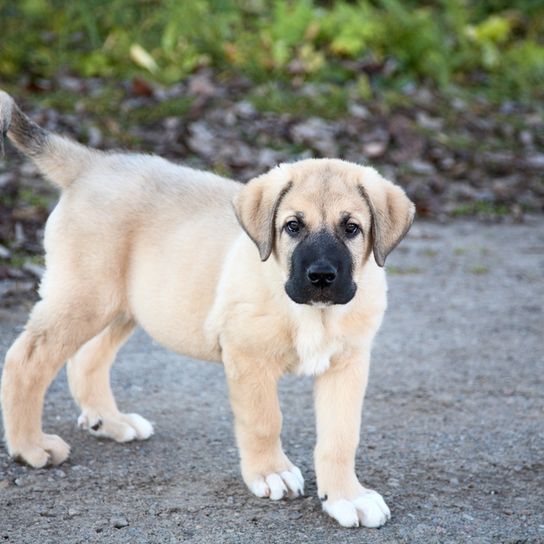

Health and breeding information
What are typical diseases for a Spanish Mastiff?
If your Spanish Mastiff has been bred according to FCI standards, it is considered to be rather robust and insensitive to diseases.
Breed specific diseases are not known.
Like all large dogs, the Spanish Mastiff is prone to hip dysplasia. However, this risk can be reduced by selective breeding.
Spanish Mastiff breeding
Most breeders of the Spanish Mastiff are located in Spain. You can get an overview of the breeders at the respective national associations of the FCI member states.
The Mastín Español carries the FCI standard number 91, group 2 (Pinscher and Schnauzer, Molosser, Swiss Mountain and Cattle Dogs), section 2.2 (Mountain Dogs).
In Baden-Württemberg, Bavaria, Brandenburg, Hamburg and North Rhine-Westphalia the Spanish Mastiff is on the list of potentially dangerous dogs, as well as in Vienna and Vorarlberg.
Since German dog breeders, due to the breed dog lists, must fear not to find sufficient buyers for their puppies, one holds back in this country with the breeding of these beautiful, large dogs rather. To find a breeder in your area would therefore be great luck.

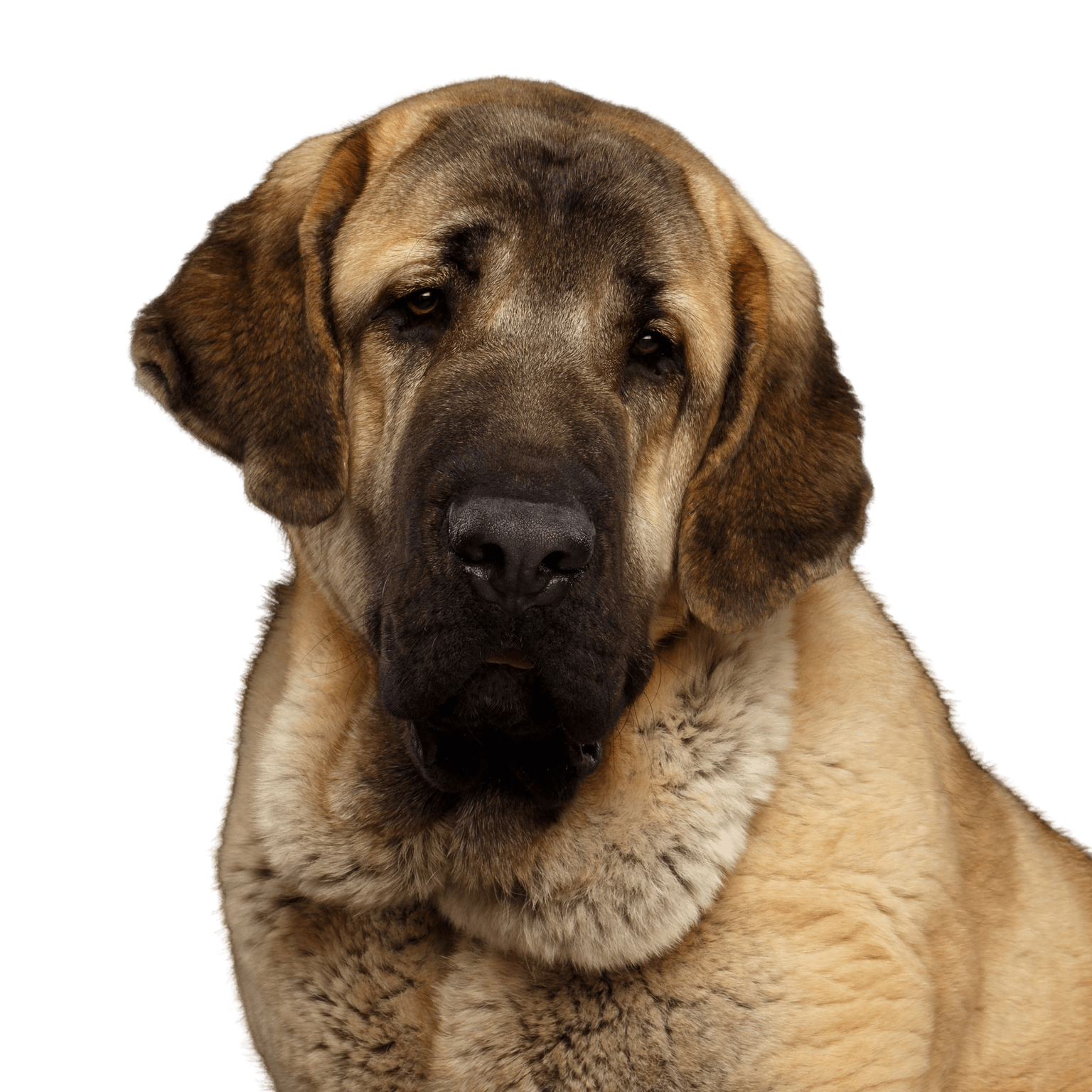
What are the breed characteristics of the Mastín Español?
The Spanish Mastiff impresses with its large, compact appearance, as well as its strong, dark bark.
Its head is broad and strong, the eyes rather small, almond-shaped and preferably dark, the nose is black.
The tail is broad set and longer haired than the rest of the body.
Appearance and coat
The Spanish Mastiff is a large, muscular and well proportioned dog.
It has a well-defined, long nose and rather small, drooping ears.
Its coat is smooth and semi-long.
Possible colors are: Yellow, lion-colored, red, black, wolf-gray, deer-red, brindle, piebald, or with a white ruff.
How big does a Mastín Español grow?
If your Spanish Mastiff has been bred according to FCI standards, your male will reach a height of between 77 and 82 centimetres, bitches usually stay a little smaller with a minimum height of 72 centimetres.
In Spain, however, there are breeders who do not adhere to these standards and continue to breed the original herding dogs as farm animals, with a shoulder height of around 100 centimetres.
How much does he weigh
According to FCI standards, your adult Spanish Mastiff may weigh between 55 and 70 kilograms.
Dogs that are bred outside this norm can reach a weight of up to 110 kilograms.
How old does a Spanish Mastiff become?
The average life expectancy of a Spanish Mastiff is about 10 to 12 years.
| Fur length | medium |
| Fur | - |
| Ear shape | Triangle |
| Tail | lang |
| Anatomy | massive, strong, hefty |
| Size ♀ | 72 - 80 cm |
| Weight ♀ | 55 - 69 kg |
| Size ♂ | 77 - 82 cm |
| Weight ♂ | 55 - 70 kg |
| Suitable For | - |
Colors

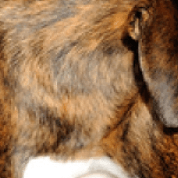






Known Diseases
Hip dysplasia (HD)
The hip dysplasia or hip joint dysplasia of the dog (HD) is a maldevelopment of the hip joint.
Other large dogs
Useful Articles
You can find articles that might interest you in the dogbible blog to match your favorite breed.
Visit our magazineto stay up to date on dog trends.
To find out more, view our Privacy Policy
Find here the breed that suits you and find out what character traits it has. Here you can also learn more about the origin, size and weight of your favorite breeds.
Matching your favorite breed, you'll find articles that might interest you on the dogbible dog blog.
Alopecia in dogs - causes, symptoms, diagnosis, prevention and treatment.
